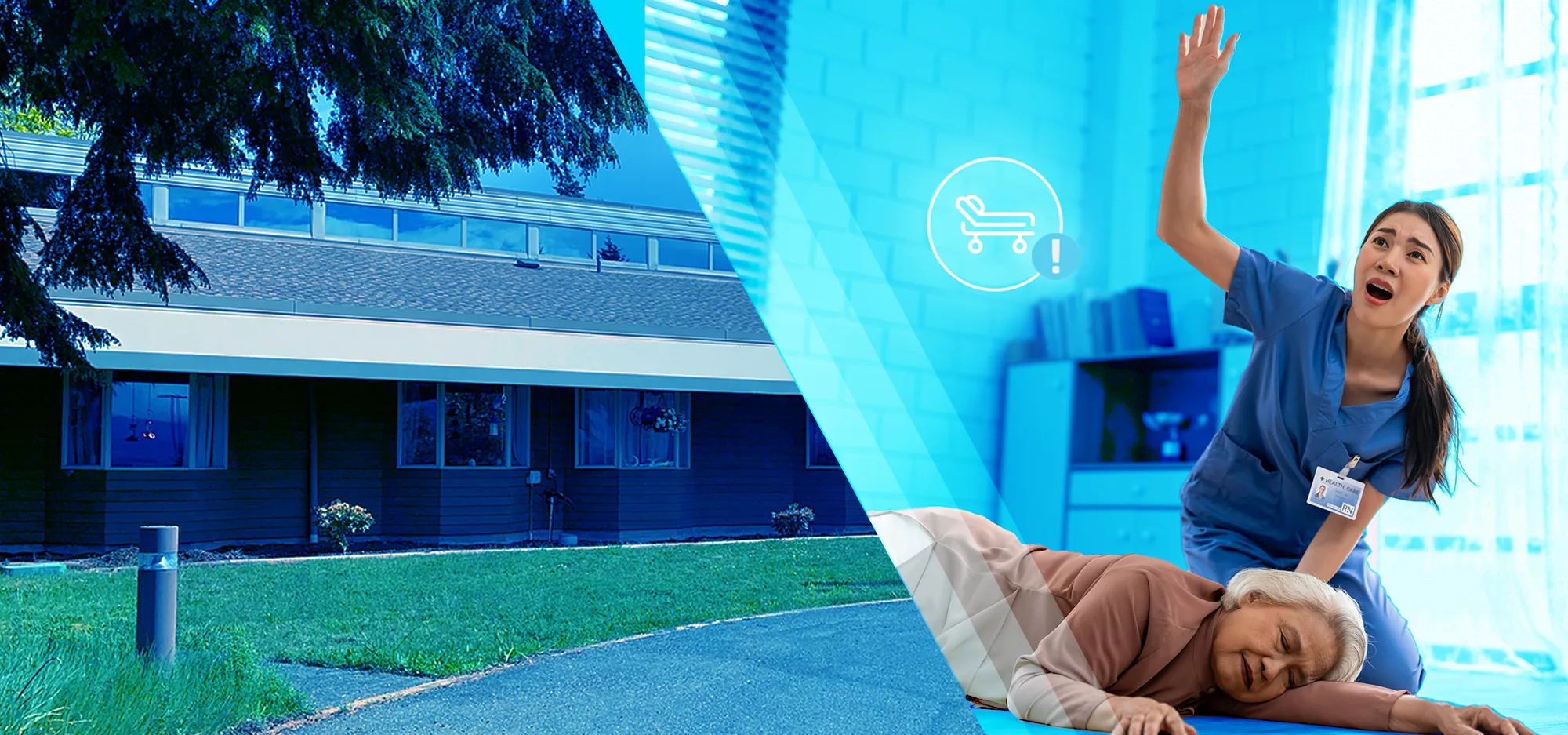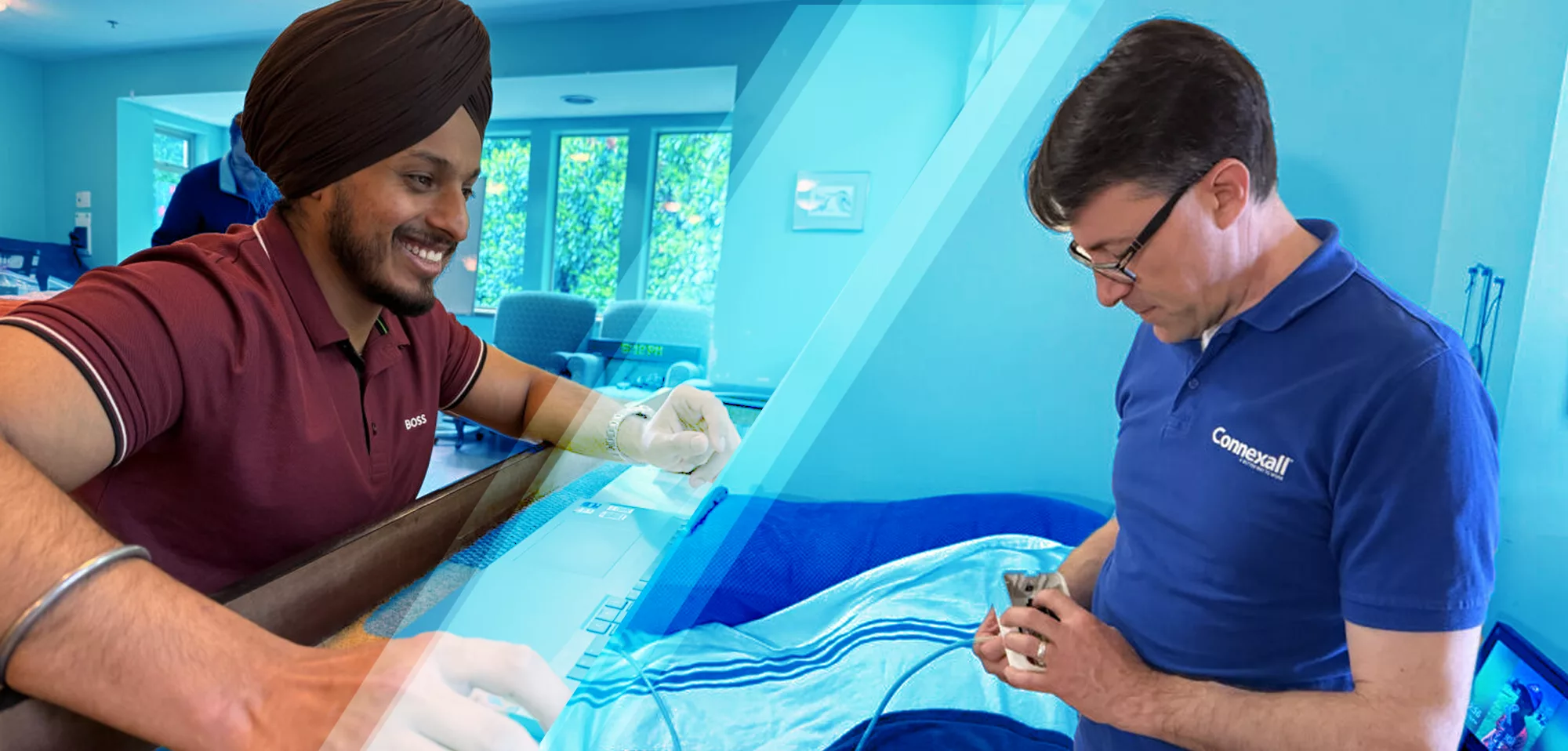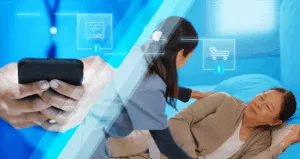To read: ~ 6 minutes
Hospitals are places of healing, where skilled professionals work tirelessly to help those in need. Yet hospitalization can introduce additional risks unrelated to a patient’s condition. One in 10 patients will experience an adverse event during hospitalization, per research in the Journal of Patient Safety, with falls representing one of the most challenging issues for care teams to prevent.
The same research highlights that 25% to 50% of patients who fall suffer injuries, and these events can be costly. The average cost for a serious fall with injury amounts to $14,056 per patient, according to a report from the Health Research and Educational Trust (in partnership with the American Hospital Association and the Joint Commission Center for Transforming Healthcare).
What makes falls especially frustrating for dedicated healthcare providers is that many are preventable. However, systems designed to help prevent falls can generate frequent non-actionable alerts, desensitizing staff to true warnings that demand immediate attention.
Genuine alerts must be taken seriously in the moment. For some healthcare facilities, this requires reimagining how alarms are triggered and how alerts get delivered.

Searching for a diagnosis
Beant Singh is well aware of the frustration caused by disruptive and ineffective fall prevention systems, and he’s spent over seven years working on the solution as a Team Lead for Solution Delivery and Implementation at Connexall.
When Glacier View Lodge, a long-term care facility in British Columbia, reached out, Beant and his team collaborated on something new. They went on-site to evaluate the situation before recommending a solution. While every healthcare facility faces similar surface-level challenges, his team knows the space, daily routines, and root causes often differ.
Rapid response roadblocks
Glacier View Lodge’s special care unit uses bed pad sensors to alert caregivers, sending fall risk notifications directly to their phones. Through careful workflow observation and staff interviews, the Connexall team identified three issues with their current system.
Sensors weren’t reliably warning staff about true fall risks. When a resident slipped out of bed, they dragged the pressure-sensitive pads with them because of the slippery mattress. Then, no alarm sounded. Meanwhile, staff would also feel overwhelmed by the number of false alarms set off by the bed pads while attending to facility residents.
The system generated excessive false alarms, which eroded staff confidence in the technology. “Even if they were shifting a little bit on the bed, like they were turning to one side, that was also triggering the alarm,” Singh explains. These frequent false positives created a “boy who cried wolf” effect, where genuine alarms risked being dismissed as non-actionable.
The notification method didn’t align with the reality of day-to-day workflows. Care teams often found themselves unable to check their phones during interactions with residents. “The other issue we had was that clinicians said, ‘If I’m with a [facility] resident and my hands are dirty and my phone is ringing, I don’t want to touch the phone. Or ‘I can’t look at the phone because I’m doing something like giving medication,’” Singh recalls. Additionally, the existing phone system limited the number of calls and alerts that could occur simultaneously, blocking bed exit alerts during busy periods.
When falls happen, they happen quickly (typically within 5-15 seconds of the patient getting out of bed). This tight window makes rapid response critical. However, all three scenarios prevented staff from responding to fall risks in a timely manner.
A lightbulb moment
Through listening to and learning from caregivers on the ground, the Connexall team conceived a new approach: Alert staff through environmental change.
The concept centered on a unit-wide lighting system, with a distinct light bulb outside of every resident’s room. Each bulb would shift from warm white to cool white when a fall risk was detected, except for the bulb outside the room that was triggering the alarm. That bulb would change to a blue color and blink to alert staff. At the same time, a marquee would display the room number of the bed exit and play a distinct tone.
The idea was that the visual and audible cues would enable caregivers to respond more quickly by providing immediate alerts. All hospital staff who saw the visual cue would be able to assist or call a nurse to help.

Preventing falls through environmental alerts
Bringing this system to life required deep collaboration between Connexall’s technical and clinical experts and Glacier View’s caregivers in the special care unit.
To start at the beginning: choosing a light bulb color.
Step 1: Lighting design
Color selection was critical. Beyond the default lighting change for non-affected rooms, the team needed to determine the best color for the blinking light outside of the room requiring attention.
The Connexall team started with red but found that it too closely mimicked the fire alarm. “We didn’t want residents to see the light and think there was a fire,” Singh shares. They ultimately settled on blue.
Staff would still receive a notification through the regular methods: phone notifications for bed pad alarms, the active alarm screen at the nursing station. At the same time, the new lighting system was up and running, and digital marquees were placed around the care unit to display the room number of the motion detection alarm (with a distinct tone to alert staff).
While the Connexall team worked on this lighting design system, they kept the bed pad sensor system in place so no alerts would be missed during the testing period.
Step 2: Alert system architecture
An innovative new solution was deployed to send alerts to the lighting design system and marquees.
The Connexall team implemented motion sensors as the core solution for fall detection and prevention. These sensors were strategically placed away from the bed to detect the specific vertical motion of residents’ feet as they come to the ground, which is a far more definitive sign of bed exit attempts than pressure-based detection.
The environmental lighting system and marquees were engineered to receive and display alerts generated by these sensors. Rather than relying on methods that often generated false alarms, this sensor could better distinguish between normal sleep movement and actual bed exit attempts, ensuring that accurate alerts translated into faster staff response times.
The sensors were integrated with both the environmental lighting system and the marquees to create multiple alert pathways. When a sensor detects a bed exit attempt, the system triggers the visual lighting changes throughout the unit, while a unique tone would sound and the room-specific information displayed on the marquees. This dual approach ensures staff receive immediate environmental awareness through the lighting changes, with detailed location data for comprehensive situational awareness.
Step 3: On-site implementation through testing and iterative refinement
Singh and his team rolled out the new alert system over a four-day testing period in the special care unit. During that time, they physically simulated resident movements to determine optimal sensor placement and sensitivity settings.
The testing shed light on scenarios they hadn’t initially considered. For example, given high-fall risk residents use very low beds, their sheet movement and arm movement during sleep triggered false alarms. The team responded by progressively restricting the sensor’s field of view.
As part of the design, switches were placed outside resident rooms, allowing staff to control when the system was armed, activating the alarm when a resident was in bed and deactivating the alarm before entering the room to avoid inadvertently triggering the alert system. The sensors were also always on: the switch at the door allowed the sensor to send the motion detection to the alerting system.
The smart bulbs provided another benefit: Connexall could slowly dim the lights at night and slowly raise them in the morning. The advantages of this circadian lighting system extend beyond improved sleep. Such systems are also linked to additional clinical benefits, like improved cognitive performance, mood, and overall health and recovery.
Step 4: System validation and continuous feedback
Caregivers noticed the effects of the implementation immediately. On the first night the system was operational, it helped prevent two falls.
The following day, as the next shift arrived, the staff present for that first night enthusiastically shared details with their colleagues and showed them how to use the new system. They did so of their own accord, simply because they saw the value and wanted others to experience it as well.
The Connexall team set up weekly calls to gather ongoing feedback from staff and plan new features, like a button for the staff to indicate when they encountered a false alarm.
Step 5: Post-implementation optimization
Implementation isn’t the end of the story. Connexall and Glacier View worked together to optimize sensor performance through data analysis and algorithm refinement. False alarms have reduced by 95%, thanks to the inclusion of the “false alarm” button for staff.
The team systematically evaluated both infrared and thermal sensor technologies to determine the most reliable bed exit detection method. Through testing and data analysis, they determined that thermal sensors provided superior accuracy in differentiating between human movement and environmental factors like sheet movement.
Moving forward, the facility will transition to thermal sensors as the primary fall prevention technology. The new sensors will have the capacity to adjust the alerting algorithm based on resident mobility. This capability will serve individual medical and physical needs.

Zero falls in June
This partnership demonstrates that the best solution to a problem, no matter how common, isn’t always immediately obvious. Finding the best way forward requires taking a closer look at the specific situation to understand how people work and determine what they need to work better.
By adopting a solution tailored to their unique circumstances, Glacier View cut down alarm volume significantly. The environmental alert method also helped improve response time to true alarms. It eliminated the need for caregivers to check their phones, saving them precious seconds, and it also expanded awareness of the alarm beyond the resident’s assigned caregiver to anyone present in the area. Singh recalls an early incident where a member of the housekeeping staff saw the light blinking. They asked the resident to stay in bed, called for help, and ultimately prevented the fall.
Better response time had a swift and visible impact on resident safety. During the June pilot period in the special care unit, the facility recorded zero falls, down from five the month prior. In the four months after the pilot period, there are still no reported falls. Other units took note of the improvement and, after hearing positive feedback from special care staff, requested the same system be implemented in their units. Connexall is planning to implement the system site-wide with multi-factoral sensors as well.
Good news spreads quickly, especially when it comes to patient safety.


